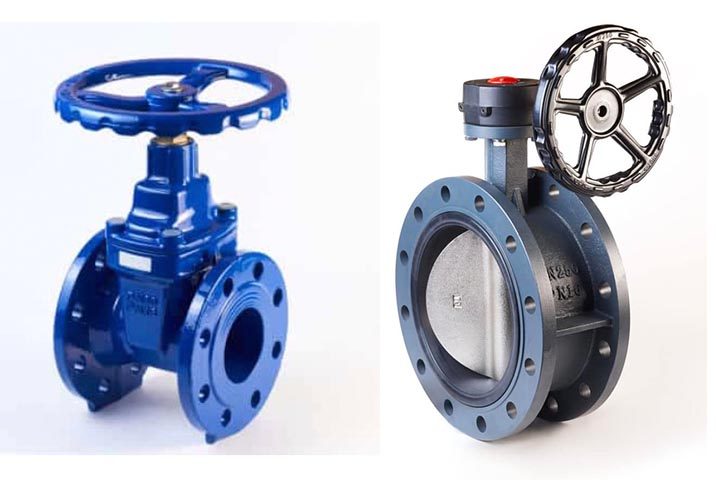Two of the most popular ones are gate valves and butterfly valves when it comes to control valves. Before running down the differences, let’s look at what they are and how they function.
Gate valves
Consider gate valves as a gatekeeper. The gate moves inside the valve to allow the liquid to flow or even block it. A lever or screw controls the moveable gate by lifting it up or down. Gate valves are available in various sizes and shapes, but it’s best to buy the slightly bigger ones. They help to control the flow of water through water supply lines. Although some of the gate valves look incredibly big, a single individual can manage them efficiently.
Butterfly valves
Experts believe that butterfly valves are cousins to gate valves. They function with the help of an internal gate. The primary difference between a butterfly valve and a gate valve is how the gate opens and closes within the valve. The entrance in gate valves moves up and down, but in butterfly valves, it remains fixed. It just swivels around its internal axis. This swiveling of the gate looks like a butterfly flying. Hence, the name butterfly valve. The primary function, though, is the same: to allow and block the flow of fluids.
Difference between the gate valve and the butterfly valve
Although the butterfly valve is a cousin to the gate valve, some differences set it apart.
- Differential pressure
Gate valves perform better under pressure than butterfly valves. Their flexible construction allows them to control the flow without creating undue pressure fluctuations. This doesn’t happen with butterfly valves. The swivel construction exposes the holding gate to greater degrees of differential pressure. This means the butterfly valve needs to operate at a greater strength. While high-end butterfly valves can sustain this pressure, most of the low-end valves cannot.
- Wear and tear
Gate valves usually outperform butterfly valves when you compare their durability. And it happens because of their design. The up and down movement of the screw controls ensures that it doesn’t suffer as much wear and tear as butterfly valves. Some of the butterfly valves these days are made considering higher pressure tolerances. But the truth is, even though their life lasts slightly longer than previous butterfly valves, they still don’t match the durability of gate valves. Hence, both types of such control valves prove efficient in different environments.
- Safety
The safety of a valve depends on two things: the pressure it faces and its widespread use. When an engineer has to select between a butterfly valve and a gate valve, he will consider where he has to do it first. For example, if he has to install it in the main water supply pipe, he would probably go for a gate valve. One of the most crucial things to consider here is the velocity of the flow of the liquid. Gate valves are safer for high-velocity flow, while butterfly valves are appropriate for slower speeds.
Now that you know the differences between a butterfly valve and a gate valve, select one that serves your purpose instead of going for the expensive one. It will not only last long but also ensure that the liquid flows smoothly for years.








